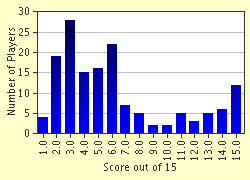Quiz Answer Key and Fun Facts
1. The early Baroque is considered to be a reaction against what period of art?
2. Annibale Carracci (1560-1609) is regarded by scholars as the foremost representative of the Carracci reform, which led to the Baroque period. What were the names of his brother and cousin?
3. The famous "Galleria Farnese," frescoed by the Carracci brothers and their assistants between 1597 and 1608(?), depicts what subject?
4. Michelangelo Merisi da Caravaggio (1571-1610) arrived in Rome in 1592. Who was his first important patron and admirer?
5. Caravaggio's paintings for a family chapel in the Roman church of San Luigi dei Francesi depict scenes from the life of Saint Matthew. By what name is this chapel known?
6. What artist, often later called "divine," painted the "Aurora" in the Casino Rospigliosi in Rome?
7. In the early 1620's, the artist Giovanni Lanfranco (1582-1647) accused a colleague of having plagiarized a painting called "The Last Communion of St. Jerome." Who was the colleague?
8. The artist Guercino (Giovanni Francesco Barbieri, 1591-1666) owed his brief Roman career to papal connections. Who was the Pope in question?
9. Pietro da Cortona (1596-1669) painted a spectacular fresco in the main reception room of the family palace of Pope Urban VIII. What is this work now called?
10. Another room of this palace contains a ceiling fresco titled "Allegory of Divine Wisdom." Who painted it?
11. Gian Lorenzo Bernini (1598-1680) designed two important papal tombs in St. Peter's. Who sculpted the smaller and more intimate tomb of Leo XI?
12. In the 1670's, Carlo Maratti (1625-1713) painted a fresco in the Palazzo Altieri for yet another Pope. What is it called?
13. In the church of San Francesco a Ripa, in the Roman district of Trastevere, there is a sculptured representation of a dying woman. Who is she?
14. An important late Baroque artist spent ten years as court painter in Madrid. Who was he?
15. Two art theorists and biographers are considered to represent opposing views of proper Baroque style -- the "linear" and the "painterly." What are their names?
Source: Author
lanfranco
This quiz was reviewed by FunTrivia editor
agony before going online.
Any errors found in FunTrivia content are routinely corrected through our feedback system.

